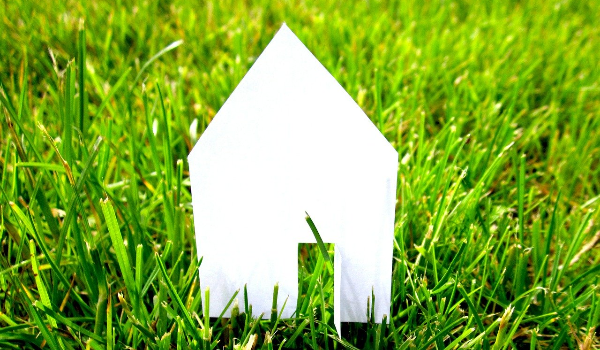
Eco-friendly homes are becoming increasingly popular, and if you’re selling your home, taking steps to go green can make your property more appealing to buyers. To learn how you can take advantage of this eco-friendly home boom, here are some important points to consider.
Eco-Friendly Homes and Savings
Eco-friendly homes aren’t just appealing for their lowered environmental impact, but they can also help reduce costs to homeowners. For instance, brick exteriors can lower heating and cooling costs by up to 8%, while tinting windows can result in an additional 40% savings on the same. Additionally, modular construction is something to consider if you’re building or adding any spaces. This type of construction can help reduce energy consumption during building by up to 67%, while also saving energy costs for future owners. Homes that reduce energy waste help lower costs paid by homebuyers making them more appealing on the market and more likely to sell.
Energy saving steps such as sufficient insulation, electrical fixtures, and appliances, are effective for reducing overall energy costs and lowering energy bills for future occupants. These savings can be used as a pitch point during sales to help solidify the deal for a higher price with the promise of future savings.
However, these savings aren’t just a great selling point, they are a tangible benefit that homeowners have come to expect from eco-friendly homes. Considering the daily cost of living, average homeowners can expect to save a minimum of $800 every year in living expenses.
Furthermore, water-saving appliances are also important to include, as these can help reduce water bill charges and reduce waste. After all, flushing the toilet consumes about 38% of the average household’s water usage. With only 1% of the earth’s water being drinkable, saving every drop that you can is important.
What Makes Eco-Friendly Homes Valuable
Green homes have been found to be worth up to $25,000 more than conventional homes. This boost in value comes from the savings that amass from the reduction in daily living costs. While general savings are important, there are a couple of specific updates that buyers are looking for. These include (from most requested to least):
- Energy-efficient windows
- Energy-efficient appliances
- Whole-home efficiency
- Energy-efficient lighting
- Water-saving toilets
When installing these features in a home, it’s important to consider how much utility consumption each upgrade will reduce and if they are going to provide the high ROI that you’re looking for. You can also consult your agent for their advice on features that are popular in your local market. While the ones listed above represent the top features wanted nationwide in 2019, local markets can vary. Furthermore, you’ll always want to consider the tax credits that come with installing energy-saving features. You might want to consider receiving them yourself before selling the property.
It will also serve you well to keep all documentation related to energy-saving upgrade and modification to ensure the future homeowner can have access to copies of the information. You may also consider seeing if specific warranties will be transferable to the new owners.
Staging Your Home Using Green Designs
When it comes time to sell your property, staging is important. Not only is it the first impression that a potential buyer will get but it can also highlight the eco-friendly improvements.
- Decorative Pillows:
Cozy spaces are highlighted with the addition of decorative pillows made from eco-friendly materials. Consider recycled fabrics and organic hemp, or fabrics dyed with soy-based chemical-free dyes. - Glass Decorations:
Glass decorations are chic, stylish, and eco-friendly. Consider decorating the living rooms and bedrooms with glass lamps and blown glass items to really make the home come to life. Bonus points if the materials were locally sourced and made. - Painting:
While the painting is usually completed before staging, using VOC free paint is something to keep in mind. Not only will it save your home from having that ‘fresh paint’ smell, but it will also prevent the inhalation of harmful chemicals. Low or VOC free paints are a must for any green home on the market. - Bathroom Staging:
When staging the bathrooms make sure to try and create a serene spa-like environment. Burning some soy or beeswax candles is one way to help set the mood. You should also include some certified organic towels for an additional homey touch. - Lighting:
Lighting in your home should be done with either low-voltage halogen lights or LEDs. Both of which can provide you with a bright white light that can help the home feel more open and welcoming. - Fabrics:
Blankets and drapes can really make a home feel cozy; however, those made with synthetic materials should be avoided. Look for fabrics made from organic materials and dyed with non-toxic dyes. - Appliances:
If you’re using food during your staging, placing snacks in the kitchen near energy-efficient appliances can give you a chance to point out the upgrades. This, in turn, can open up a conversation about the eco-friendly benefits that come with the home, something that might have otherwise gone understated.
When staging your home, keep in mind the need for green products and items. If you want your home to feel as eco-friendly as possible, this trend needs to run through to everything on display. Doing this can also help show potential buyers your commitment to going green, making them more inclined to trust that your property is the best for them.
The Bottom Line
Eco-friendly homes are becoming increasingly popular and it isn’t hard to see why. Between the benefits to the environment and the lowered cost of utilities, more and more homebuyers are on the lookout for homes like this.
If you’re looking to take advantage of this boom, keep in mind the above points and speak with a real estate agent to learn what kinds of upgrade would benefit you most. With the proper advice, you can make the most out of your property and reap the greatest ROI.





Leave a Reply